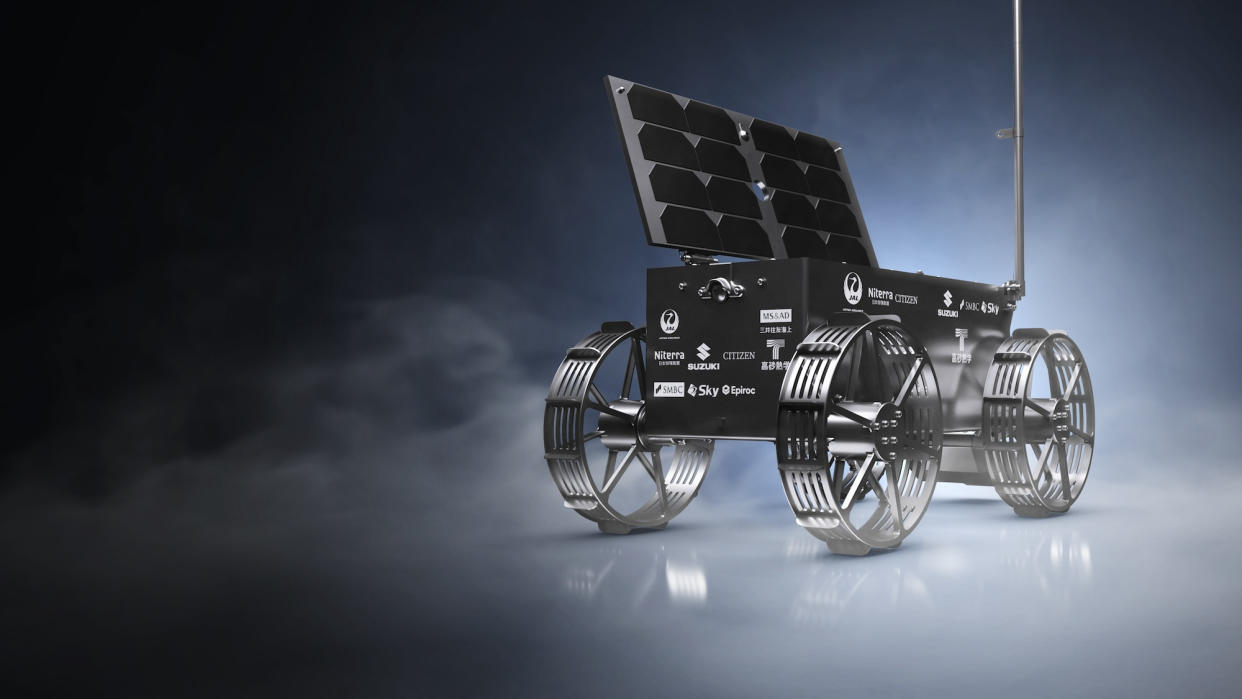Japan's ispace unveils micro rover for its 2nd moon mission

The Japanese private spaceflight company ispace has unveiled a mini rover that will fly on its next moon landing mission next year.
The micro rover will launch in winter 2024 inside the payload bay at the top of ispace's Mission 2 lander, if all goes according to plan.
The rover is 10.24 inches (26 centimeters) tall, 12.4 inches (31.5 cm) wide and 21.26 inches (54 cm) long, and it will weigh about 11 pounds (5 kilograms). It will carry a forward-mounted HD camera, which it will use to take images of moon dirt that it scoops up with a shovel.
Related: Private Japanese moon lander crashed after being confused by a crater
"Continuous mission operations are essential to provide lunar transportation and data services, so I am pleased to announce the progress we have made on the Mission 2 lander flight model and the final design of the micro rover," Takeshi Hakamada, ispace founder and CEO, said in a statement on Nov. 16.
The company launched its first lunar mission, the Hakuto-R lander, in December 2022. Hakuto-R attempted to land on the moon in April this year, but the spacecraft's onboard computer misjudged its altitude, resulting in a crash landing.
RELATED STORIES:
— Japan's ispace nabs $55 million NASA moon landing deal, slips 3rd lunar launch to 2026
— Moon crash site found! NASA orbiter spots grave of private Japanese lander (photos)
— Private Japanese moon lander reaches lunar orbit
Mission 2 is also based on the Hakuto-R lander, which weighed about 2,200 pounds (1,000 kg) at liftoff. The new mission incorporates lessons learned from Mission 1 and improved software, ispace representatives said.
The company has chosen the name Resilience for the lander, in keeping with the company's motto of "Never Quit the Lunar Quest." The Mission 2 lander will carry five payloads to the lunar surface.
ispace is also working on Mission 3, which is scheduled for launch in 2026. That mission will use the new, larger Apex 1.0 lunar lander, which has a projected payload capacity of 1,100 pounds (500 kg).

